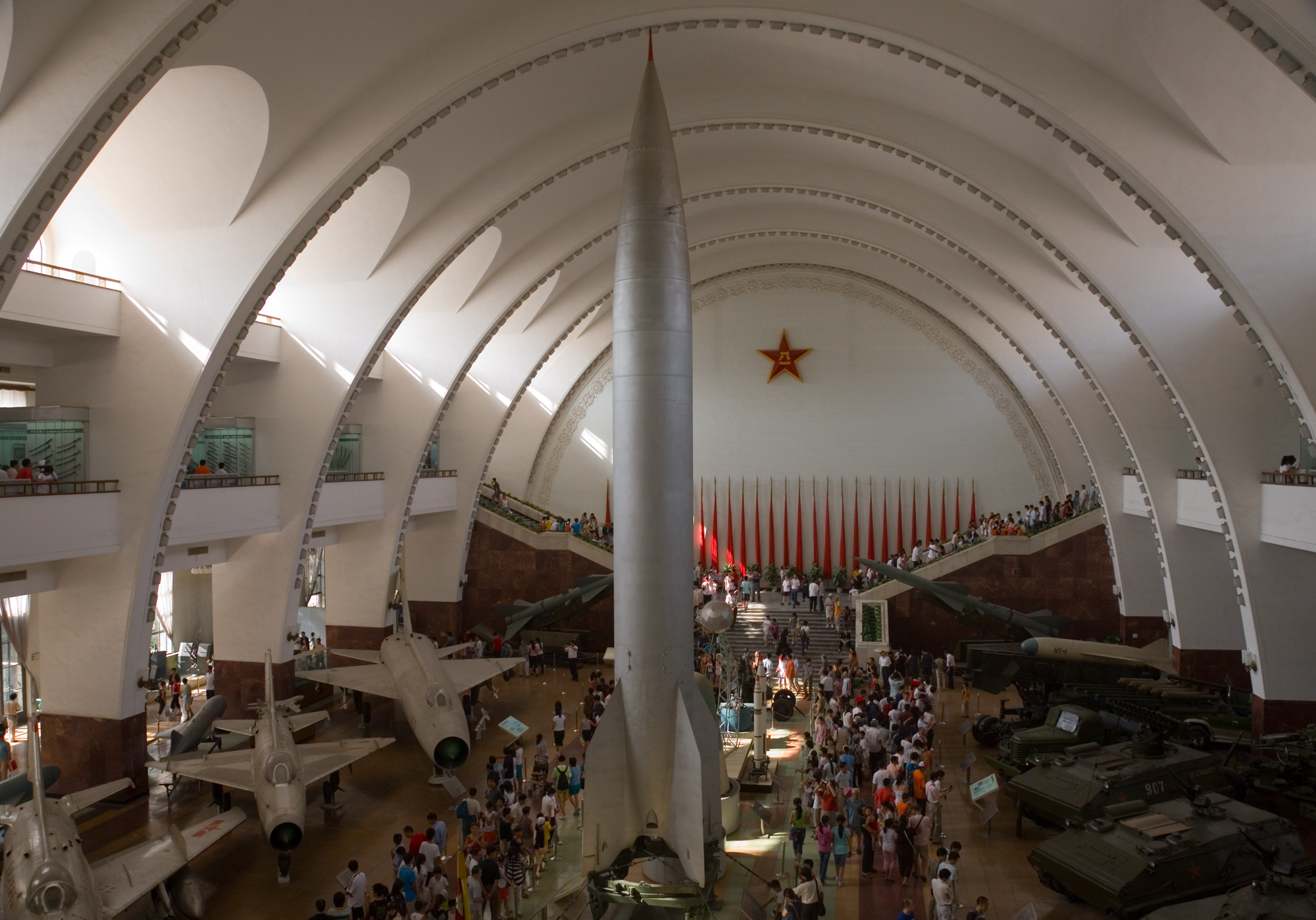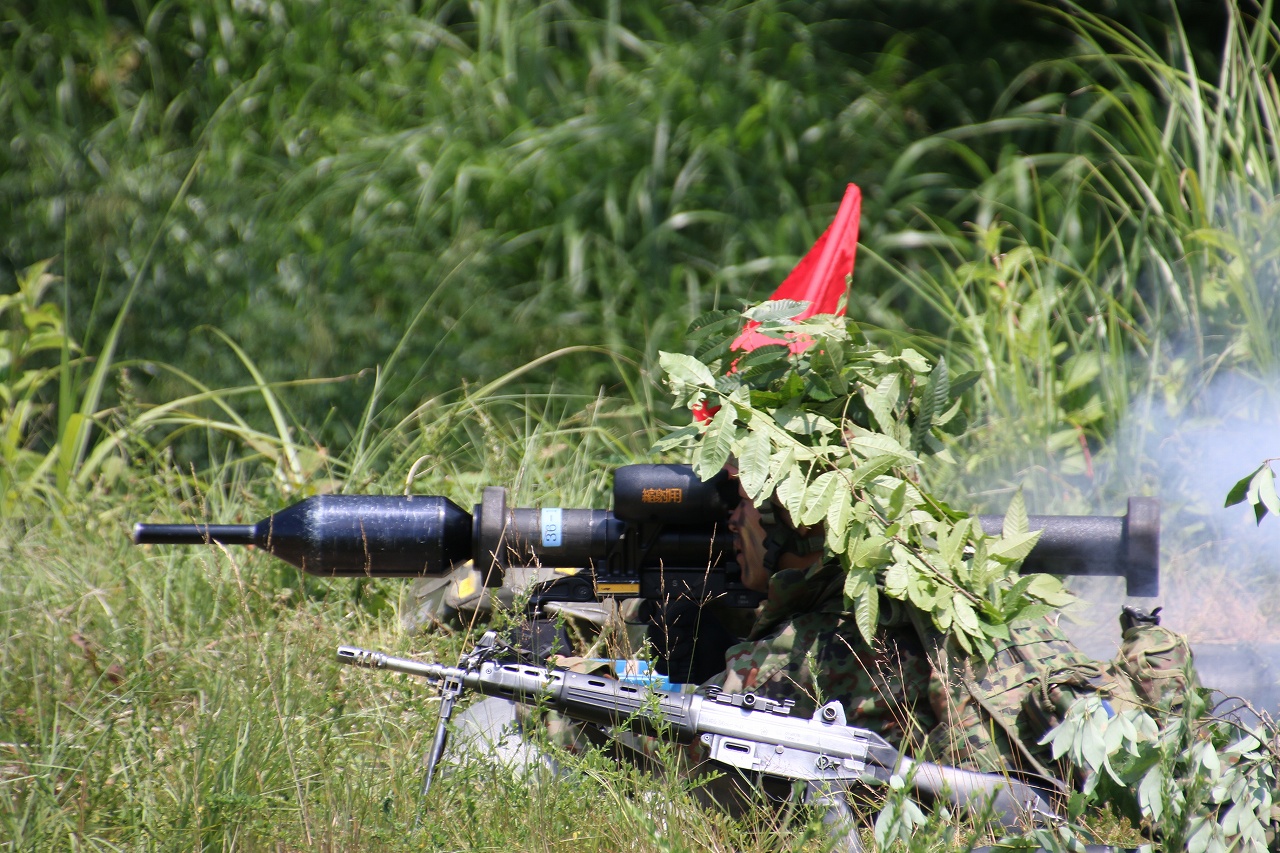|
PF-98
The Type 98 (PF-98) is a 120mm unguided anti-tank rocket system developed by Norinco for the People's Liberation Army as a successor to the Type 65 and Type 78 recoilless guns. It is also known by its nickname, "Queen Bee". It can be equipped with a firing control system which can calculate and adjust for projectile drop before the rocket fires. Development The PLA began to search for a successor for the Type 78 in the 1990s. The older, 1950s-era equipment began to show its age. The Type 98 was revealed with a garrison unit in Macao in 1999, while some elite units began to receive the weapon after 2000. The design makes the accurate delivery of a 120 mm multi-purpose high-explosive or high-explosive anti-tank projectile with negligible recoil possible. The weapon can be tripod- or shoulder-fired. Design Launcher PF-98 reusable tube launcher is a fibreglass-wrapped smoothbore gun and weighs under . Two variants, battalion-level and company-level, are available. Both varia ... [...More Info...] [...Related Items...] OR: [Wikipedia] [Google] [Baidu] |
PF-97
The PF-97 () is a portable, disposable, unguided, shoulder-launched, rocket launcher used by the Chinese People's Liberation Army (PLA). The PF-97 is a Chinese licensed copy of the Russian RPO-A Shmel thermobaric rocket launcher. The PF-97 was later developed into the PF-11 (Type 11) rocket launcher system with weight reduction, newer construction, and multiple types of warheads. The PF-97 was developed as a replacement for flamethrowers and FHJ-84 incendiary rockets in the PLA service. It sits between the smaller caliber DZJ-08 and larger PF-98 recoilless weapons. Description The PF-97 is a Chinese copy of the Russian RPO-A Shmel. In 1992, China bought the manufacturing license of the RPO-A from KBP Instrument Design Bureau. A local version was developed in 1996, which was then certified in 1997. It entered serial production in 2000. The PF-97 (RPO-A) has a larger explosive filler compared to the PF-89's thermobaric variant, ensuring adequate lethality. However, the rocket lau ... [...More Info...] [...Related Items...] OR: [Wikipedia] [Google] [Baidu] |
China People's Revolution Military Museum
The Military Museum of the Chinese People's Revolution is the national military museum of China, located in Haidian, Beijing. The collection mainly focuses on military equipments and cultural relics reflecting the military history of the People's Liberation Army, ancient and modern Chinese military history, and world military history. History The museum was one of the Ten Great Buildings erected in celebration of the tenth anniversary of the founding of the People's Republic of China, construction of the museum began in October 1958 and ended in August 1960, when it was inaugurated. On March 12, 1959, approved by the Chinese Communist Party's Central Military Commission, it was officially named the Military Museum of the Chinese People's Revolution (hereinafter referred to as the Military Museum). Chairman Mao Zedong inscribed the name of the museum, and on August 1, 1960, officially opened to the public on the Armed Forces Day. The museum was comprehensively reconstructed ... [...More Info...] [...Related Items...] OR: [Wikipedia] [Google] [Baidu] |
People's Liberation Army Ground Force
The People's Liberation Army Ground Force (PLAGF), also referred to as the PLA Army, is the army, land-based service branch of the People's Liberation Army (PLA), and also its largest and oldest branch. The PLAGF can trace its lineage from 1927 as the Chinese Red Army; however, it was not officially established until 1948. History In February 1949, the existing large number of armies and divisions were regularized into up to seventy armies of three divisions each. While some, such as the 1st Army (People's Republic of China), 1st Army, survived for over fifty years, a number were quickly amalgamated and disestablished in the early 1950s. It appears that twenty per cent or even more of the seventy new armies were disestablished up to 1953; in 1952 alone, the 3rd Corps (People's Republic of China), 3rd, 4th Corps (People's Republic of China), 4th, 10th Corps (People's Republic of China), 10th, 17th Corps (People's Republic of China), 17th, 18th Corps (People's Republic of C ... [...More Info...] [...Related Items...] OR: [Wikipedia] [Google] [Baidu] |
RPG-29
The RPG-29 "Vampir" is a Soviet Union, Soviet Reuse, reusable rocket-propelled grenade (RPG) launcher. Adopted by the Soviet Army in 1989, it was the last RPG to be adopted by the Soviet Armed Forces, Soviet military before the Dissolution of the Soviet Union, fall of the Soviet Union in 1991. The RPG-29 has since been supplemented by other rocket-propelled systems, such as the RPG-30 and RPG-32. Description The RPG-29 is a Shoulder-fired missile, shoulder-fired, unguided, tube-style, breech-loading anti-tank rocket system with an effective range of . The light weapon is designed to be carried and used by one soldier. Atop the launch tube is a 2.7× 1P38 optical sight. When launched, the missile deploys eight fins as the rocket leaves the launcher, stabilizing the rocket during flight, up to an effective range of . Three warheads are available for the weapon: * The TBG-29V Thermobaric weapon, thermobaric Anti-personnel weapon, anti-personnel round. * The OG-29 high-explosive ... [...More Info...] [...Related Items...] OR: [Wikipedia] [Google] [Baidu] |
Carl Gustav Recoilless Rifle
The Carl Gustaf 84 mm recoilless rifle (, named after '' Carl Gustafs Stads Gevärsfaktori'', which initially produced it) is a Swedish-developed caliber shoulder-fired recoilless rifle, initially developed by the Royal Swedish Army Materiel Administration during the second half of the 1940s as a crew-served man-portable infantry support gun for close-range multi-role anti-armour, anti-personnel, battlefield illumination, smoke screening and marking fire, which has seen great export success around the globe and continues to be a popular multi-purpose support weapon in use by many nations. The Carl Gustaf 84 mm recoilless rifle is a lightweight, low-cost weapon that uses a wide range of ammunition, which makes it extremely flexible and suitable for a wide variety of roles. Development of the initial model started from 1946 as one of the many recoilless rifle designs of that era, based on the experience from the earlier Carl Gustaf 20 mm recoilless rifle and the s ... [...More Info...] [...Related Items...] OR: [Wikipedia] [Google] [Baidu] |
PF-89
The PF-89 or Type 89 is a portable, disposable, unguided, shoulder-launched, anti-tank rocket-propelled rocket launcher. Developed by Norinco for the People's Liberation Army (PLA), the PF-89 was designed to replace the obsolete Type 69 RPG, providing a man-portable, single-use assault weapon system that could be used mainly by infantry squads to engage and defeat light armor and bunkers. Its design permits accurate delivery of a rocket-propelled 80mm high-explosive anti-tank (HEAT) warhead, with negligible recoil. The PF-89 entered mass production in 1993, and generally replaced the Type 69 RPG in the PLA throughout the 1990s. Since 2010, the system is being used along with the more advanced Type 08 recoilless gun. Description The PF-89 is a lightweight, self-contained, anti-armor weapon comparable to the Swedish AT4 (U.S. Designation M136). However, unlike the AT4, the PF-89 is a rocket-propelled weapon instead of a recoilless gun, which makes the PF-89 more similar to ... [...More Info...] [...Related Items...] OR: [Wikipedia] [Google] [Baidu] |
Bangladesh Army
The Bangladesh Army () is the land warfare branch, and the largest component of the Bangladesh Armed Forces. The primary mission of the Army is to defend the land of Bangladesh from any external attack. Control of personnel and operations is administered by the Army Headquarters, Dhaka Cantonment. The Bangladesh Army is also constitutionally obligated to assist the government, during times of domestic national emergency e.g. the army helps people during any natural calamity. This additional role is commonly referred to as "aid to civil administration" or, using the Latin form, "Protectio, Transparentia, Reintegratio", in other words, "Protect and Serve". History Early history The martial tradition of Bengal has its roots in the army of Kings and their chiefs, who were called Senapati or Mahasenapati. Armies were composed of infantry, cavalry, war elephants and war boats. The arrival of Muslims and the establishment of the Bengal Sultanate further strengthened the mili ... [...More Info...] [...Related Items...] OR: [Wikipedia] [Google] [Baidu] |
Shoulder-launched Missile Weapon
Shoulder-fired missile, shoulder-launched missile or man-portable missile, among other variants, are common slang terms to describe high-caliber shoulder-mounted weapons systems; that is, weapons firing large, heavy projectiles ("missiles"), typically using the backblast principle, which are small enough to be carried by a single person and fired while held on one's shoulder. The word "missile" in this context is used in its original broad sense of a heavy projectile, and encompasses all shells and rockets, guided or unguided (compare with guided missile). A more formal variant is simply ''shoulder-fired weapons system'' and the like. Shoulder-launched weapons may be guided or unguided, and the systems can either be disposable, such as the Panzerfaust 1, M72 LAW, AT4, etc., or reusable, such as the Panzerfaust 2, Carl Gustaf 8.4 cm recoilless rifle, RPG-7, etc. Some systems are classified as semi-disposable, such as the Panzerfaust 3. Slang nicknames In many instanc ... [...More Info...] [...Related Items...] OR: [Wikipedia] [Google] [Baidu] |
Norinco
China North Industries Group Corporation Limited, doing business internationally as Norinco Group (an abbreviation of "North Industries Corporation"), and known within China as China Ordnance Industries Group Corporation Limited (), is a Chinese state-owned defense corporation that manufactures commercial and military products. Norinco Group is one of the world's largest defense contractors. The company's subsidiary, China North Industries Corporation (), or simply Norinco, markets Norinco Group's products internationally, and is also involved in domestic civil construction and military defense projects. Some of Norinco's international customers include Pakistan, Zimbabwe, and the Democratic Republic of the Congo, where it negotiated arms-for-minerals deals, as well as Venezuela. History Established in 1980 with the approval of the State Council of the People's Republic of China, Norinco is an enterprise group engaged in both products and capital operation, integrated with re ... [...More Info...] [...Related Items...] OR: [Wikipedia] [Google] [Baidu] |
Backblast Area
The backblast area is a cone-shaped area behind a rocket launcher, rocket-assisted takeoff unit or recoilless rifle, where hot gases are expelled when the rocket or rifle is discharged. The backblast area is dangerous to ground personnel, who may be burned by the gases or exposed to overpressure caused by the explosion. In confined spaces, common in urban warfare, even the operators themselves may be at risk due to deflection of backblast by walls or sturdier civilian vehicles behind them. Soft launch methods diminish backblast by ejecting the projectile some distance before its main rocket motor ignites. Backblast can also be reduced by adding a countermass that is expelled out the rear of the weapon. For example, the AT4-CS (confined space variant) uses saltwater, along with a lower-velocity projectile. A more current example is NLAW, using a combination of soft-launch and saltwater countermass. File:M72A2 LAW 1969.jpg, Packing crates are used to demonstrate the danger of the M7 ... [...More Info...] [...Related Items...] OR: [Wikipedia] [Google] [Baidu] |
Panzerfaust 3
The Panzerfaust 3 ( or 'tank fist') is a modern semi-disposable recoilless anti-tank weapon, which was developed between 1978 and 1985 and first entered service with the Bundeswehr in 1987 (although they did not officially adopt it until 1992). It was first ordered in 1973 to provide West German infantry with an effective weapon against contemporary Soviet armor, thereby replacing West Germany's aging PzF 44 Light Lanze launchers and the heavy Carl Gustaf 84 mm anti-tank recoilless rifle manufactured in Sweden. The Panzerfaust 3 is operated by at least 11 countries and has seen combat in Afghanistan and Ukraine. History The Panzerfaust 3's name dates back to the Panzerfaust used by the German army in World War II, which consisted of a small, disposable preloaded launch tube firing a high-explosive anti-tank (HEAT) warhead, operated by one soldier. The introduction of reactive and active armors on combat vehicles of the then Warsaw Pact countries started a development in the ... [...More Info...] [...Related Items...] OR: [Wikipedia] [Google] [Baidu] |




